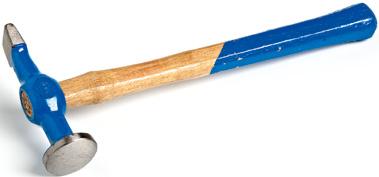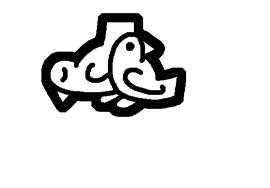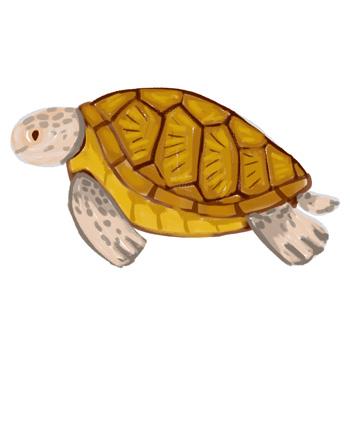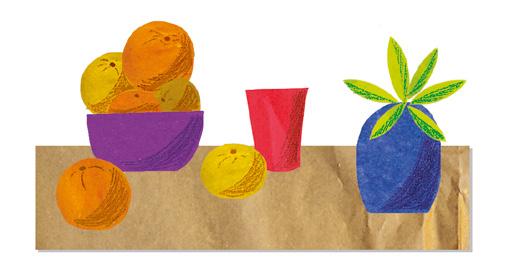PRIMARY 3 ArtS and Crafts



• SDG
Understand and appreciate the importance of going to school to secure a better future for every boy and girl in the world.
1.1 My art class
• Art materials
• Three-dimensional letters
• Pictograms
• Axial symmetry cut-outs
• Armatures
• Distance and size
• A pencil case with materials
• A three-dimensional name
• Social harmony
• A cut-out garland
Quality education
Value your natural environment and help to protect it from degradation.
• Art styles: Francisco de Goya and Joaquín Sorolla
• Friends in motion
• A Christmas scene
• Bright Christmas colours
• A Christmas mobile
• Create your own style
Build:
• Let’s celebrate Peace Day (Page 65)
Paint:
• Let’s make an autumn tapestry (Page 73)
• Let’s defend our rights (Page 75)
Life on land
Understand the negative environmental impact of cities to promote inclusive and sustainable communities


2.1 It’s so cold
• Symmetry
• Colour temperature
• Comic strips and speech bubbles
• Geometry
2.1
• Textures
• Shapes
• The still-life
• Movement
• Art styles: Clara Peeters and Yayoi Kusama
• The symmetry of snowflakes
• Cold and warm colours
• A comic strip shivering in the cold
• A geometric pattern on my winter jumper
• A garden with visual textures
• Animal shapes
• From garden to still-life
• A motion-picture garden
• Create your own style
3.1 A harmonious city
• Rhythm and harmony in cities
• Visual textures
• Music in paintings
• The enchanted world of books

• Sgraffito
3.2 A sustainable community
• Urban art
• Pottery with plant decorations
• A balanced print
• A frottage of the Alhambra
• Melodic shapes
• A lovely memory
• Colours in the ocean depths
Build:
• Enjoy the world from above (Page 67)
Paint:
• Let’s celebrate spring (Page 77)
Sustainable cities and communities
• Light and colour
• Art styles: Marianne von Werefkin and Paul Cézanne
• Graffiti art to commemorate World Environment Day
• A friese with plant motifs
• Light and shadow in a landscape
• Create your own style
Build:
• Play and interpret emotions (Page 69)
• Let’s celebrate Family Day (Page 71)
Paint:
• Let’s feel the blue sea water (Page 79)




























In
Every boy and girl around the world has the right to an education and the obligation to go to school. Understand and appreciate the importance of going to school to secure a better future for every boy and girl in the world.



the world’s poorest countries, access to an education is still a serious problem today.


In class, you can spend time together and share your creativity. What a great creative team we are!
Look and circle the materials we use in Art class.
Remember to use art materials in the correct way. At the end of Art class, clean all the materials and tidy up. That way, you can continue to use them for longer!





Which materials do you need in Art class? Complete.



1.1 My Art class


Note how these letters look like they are solid.
We say an object is three dimensional, or that it is in three dimensions, when it doesn’t look flat: it appears to have height, width and depth. Height Width Depth
Look at the 3D alphabet and the steps for drawing the letters.

Draw your name with three-dimensional letters. Colour the letters however you like.





1.1 My Art class
Pictograms are simple images that represent ideas and transmit information.




They are very expressive. No text is necessary because the message is clear.
Look at the pictograms. Which school rule does each one of them represent?
Say good morning. Share with others.
2
4 Raise your hand and wait to speak.
Be quiet. 5
1 3 Use the bin.
Preparing for the task Choose a school rule that is important to you. Create a poster with a pictogram to represent it. Put all the posters up on the classroom walls.
1.1 My Art class


Look at the steps for doing a symmetrical drawing by folding and cutting.


2 1



Look at these objects. Mark the ones that are not symmetrical. Fold a small piece of paper in half. Draw half of your picture on one side of the paper.


Cut the picture out. 3 4
Unfold the piece of paper. Finish the drawing by adding the details.


Choose four symmetrical objects. Make them by folding and cutting. Create a garland by glueing them together.






To represent people playing games, we have to learn how to draw the body in motion.

An armature represents the skeleton . The small circles correspond to the joints.
The shoulders, elbows, wrists, hips, knees and ankles are the joints that allow us to move.

Complete the armatures and add the details. What are they doing?



Look at the example.


Things appear different in size depending on how far away we are from them.
When something is near, it looks big. If it is far away, it looks small. Look at the woman and the house in this painting as an example.



Distance and size

Colour and cut out. Then, classify the objects in three groups according to distance. Keep the pieces.














scene CREATE

Arrange the pieces in the scene. Think about their size and the distance. Stick them on the page.
Hazlo virtualmete en anayaeducacion.es.



Look for information on the Internet about the life and work of these painters.


Francisco de Goya (17461828) was a Spanish painter whose paintings reflected life at the time he lived: events, characters, customs, children’s games, etc. He was a master at depicting light and shadow.

Joaquín Sorolla (1863-1923) was a painter from Valencia. His artwork is characterised by the intensity of the light, in particular in his paintings of scenes on the beach, where children are always playing.





Remember what you have learned about armatures, expressiveness and the size of a figure depending on distance. Create your own scene of children playing outdoors.

In this unit you have seen how important it is to go to school, to participate, to play and to learn. Now, use the question technique to think and answer:
Why is education the key to escaping poverty?
1 Colour to show how you felt doing the activities below.

Happy Sad Neutral


Calculating the size of an object according to distance.
Writing your name in three-dimensional letters.
Why is education the key to escaping poverty?
2 4
Answer 1 Answer 3
Answer 2 Answer 4
1 3

Share your four different answers with the class and explain your reasoning.
Look at the diagram and think about how one answer can affect another. Consulta en anayaeducacion.es
Making a poster of school rules.
Learning about joints and armatures.
2 You now know we have joints that allow us to move. Colour to show how hard it is for you to recognise each one in an armature.
It’s not difficult
It’s a little difficult
It’s very difficult
There are 14.4 trees per person in Spain.


Plan of action 1 It’s so cold! 2 In the garden
What do think?
Value your natural environment, and help to protect it from degradation.

Look at these sculptures made from blocks of snow. They look like they are carved in stone.




Snow is made from ice crystals. They have perfect symmetry. This is how they look under a microscope. Circle your favourite crystal.


Follow the steps to create snowflakes. You need white paper and a piece of card.



Draw circles of different sizes using round objects. Cut them out and fold them like this:


Draw these shapes or others.


1 2 3
Cut around the shapes. Open the flakes. Stick them on the blue background.






2.1 It’s so cold!
Colours produce visual sensations. Some colours produce a feeling of warmth. They remind us of the Sun and fire. These are warm colours.
Other colours produce a feeling of cold. They remind us of the sky, water and nature. These are the cold colours.
Warm Cold
Look at the picture. Circle the warm colours in red and the cold colours in blue.

Colour the left half of the picture in warm colours. Colour the right half in cold colours.



Hazlo virtualmente en anayaeducacion.es

A comic strip uses a series of drawings and speech bubbles to tell a story.
The speech bubble is for the words that someone says or thinks. There are different types of bubbles: talking, thinking and shouting.
Write the type of speech bubble inside each one.

Look at the comic strip. Add the dialogue below in the correct types of speech bubble. Colour and finish the story by completing the final frame however you like.
I wonder where they came from…



Mum, Mum! I can see two people over there! I’m shivering.
Hi, my name is Blanca. It’s so cold here! We penguins love this temperature. We need it to live in the cold.
2.1 It’s so cold!

Look at the photographs and the steps to create geometric patterns. What do they remind you of?



A geometric pattern on my winter jumper
Look at the geometric pattern on the jumper. Draw another warm piece of clothing (mittens, hat, scarf...) and then create another geometric pattern to decorate it.







Look
Imagine touching the elements in this garden with your hands. What texture do they have? Circle the texture you think.

soft rough uneven smooth
You can use sight or touch to distinguish the texture of a surface: rough, smooth, raised... . When we touch something, we feel the texture with our hands. This is called tactile texture. When we look at it, we call it visual texture.
Fill in the parts you can see. Then, complete the picture however you like.




Look at the steps to draw these animals. Note the geometric shape that characterises the parts of each animal.



Draw the oval outline of the shape. 1




2.2 It’s so cold!
What animal could you create from a triangle? And a rectangle?
Add the details. 2 Colour the parts. 3

Add the animals you have learned how to draw to this landscape. Complete and colour however you like.










A still-life, also known as ‘deadnature’, is a type of composition with inanimate objects or things. Food, bowls and jugs are common themes.
The elements can suggest the tastes and smells they represent. The Colombian artist Fernando Botero (b. 1932) has painted the greatest number of still-lifes in art history.

Follow the steps below. Create a still-life with pieces of coloured paper.










2.2 It’s so cold
Look at the photographs below and order them.
Sequential pictures use a set of photographs or illustrations in a specific order to tell a story.
What do these images tell you when you look at them one by one? And when you look at them in order?





Hazlo virtualmente en anayaeducacion.es
Preparing for the task Follow the steps to build a film machine.
Collect your materials.

2
Draw five frames on a piece of paper and a sequence of five images.



3 1 5
Paint the carboard tubes and the box. You can line the box with paper.








Cut out a window in the top. Then, decorate the bottle tops and stick them on like buttons. 4



Make holes in the box and insert the cardboard tubes.
Put the piece of paper over the cardboard tubes.

Look for information on the Internet about the life and work of these painters.

Clara Peeters (1594-1621) painted the flowers in this artwork to look like real-life flowers. This is called realism.






Circle the flowers you can see in the artworks by Clara Peeters and Yayoi Kusama.







Learn the steps to draw flowers. Then, paint a picture of your favourite flowers.










In this unit, you have learned about the colours, shapes and textures in nature. Now, use the brainstorming technique to find out the importance of nature on our health.
• Would you be happy if there were no green spaces to visit?

• How do you think you would feel?
• In your opinion, why is it important to protect nature from the degradation happening today?
Make a list of actions you can take to help nature. Share your ideas with the class.
1 Put a mark from 1 to 3 on the dartboard to show your level in each area.
Symmetry in drawings.
Creating visual textures.

3
Geometric series.
2
1
Sequential pictures.
2 Write down the tasks. Put them in the order you are best at, from 1 (you are good at this) to 4 (you would like to improve).

Cut out pieces of fruit from coloured paper.
Draw the shapes of the pieces of fruit.
Arrange the pieces.
Glue the pieces in place.
Look for information on the Internet about the benefits of playing in the park or going for a walk in nature.

©
All rights reserved. No part of this publication may be reproduced, stored in a retrieval system, or transmitted, in any form or by any means, electronic, mechanical, photocopying, recording, or otherwise, without the prior permission of the publishers.
GRUPO ANAYA, S.A., 2023 - C/ Valentín Beato, 21 - 28037 Madrid.